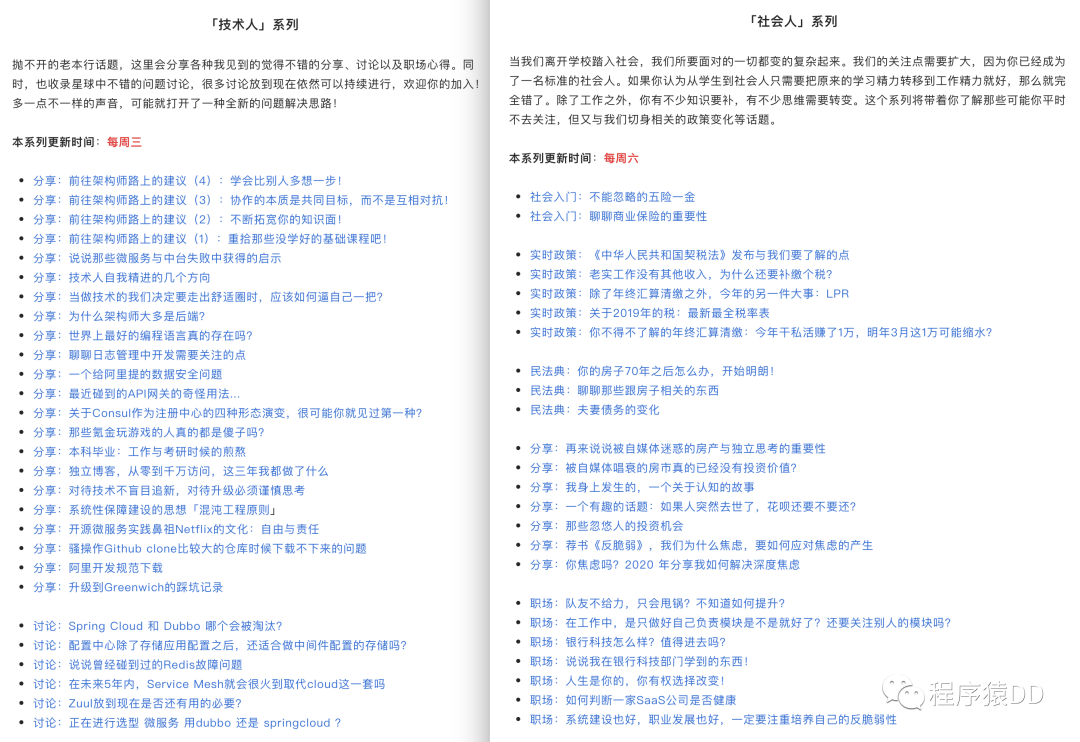点击上方蓝色“程序猿DD”,选择“设为星标”
回复“资源”获取独家整理的学习资料!

来源 | juejin.im/post/5d9b455ae51d45782b0c1bfb
Java 8 最大的特性无异于更多地面向函数,比如引入了 lambda等,可以更好地进行函数式编程。前段时间无意间发现了 map.merge() 方法,感觉还是很好用的,此文简单做一些相关介绍。首先我们先看一个例子。
merge() 怎么用?
假设我们有这么一段业务逻辑,我有一个学生成绩对象的列表,对象包含学生姓名、科目、科目分数三个属性,要求求得每个学生的总成绩。加入列表如下:
private List<StudentScore> buildATestList() {
List<StudentScore> studentScoreList = new ArrayList<>();
StudentScore studentScore1 = new StudentScore() {{
setStuName("张三");
setSubject("语文");
setScore(70);
}};
StudentScore studentScore2 = new StudentScore() {{
setStuName("张三");
setSubject("数学");
setScore(80);
}};
StudentScore studentScore3 = new StudentScore() {{
setStuName("张三");
setSubject("英语");
setScore(65);
}};
StudentScore studentScore4 = new StudentScore() {{
setStuName("李四");
setSubject("语文");
setScore(68);
}};
StudentScore studentScore5 = new StudentScore() {{
setStuName("李四");
setSubject("数学");
setScore(70);
}};
StudentScore studentScore6 = new StudentScore() {{
setStuName("李四");
setSubject("英语");
setScore(90);
}};
StudentScore studentScore7 = new StudentScore() {{
setStuName("王五");
setSubject("语文");
setScore(80);
}};
StudentScore studentScore8 = new StudentScore() {{
setStuName("王五");
setSubject("数学");
setScore(85);
}};
StudentScore studentScore9 = new StudentScore() {{
setStuName("王五");
setSubject("英语");
setScore(70);
}};
studentScoreList.add(studentScore1);
studentScoreList.add(studentScore2);
studentScoreList.add(studentScore3);
studentScoreList.add(studentScore4);
studentScoreList.add(studentScore5);
studentScoreList.add(studentScore6);
studentScoreList.add(studentScore7);
studentScoreList.add(studentScore8);
studentScoreList.add(studentScore9);
return studentScoreList;
}
我们先看一下常规做法:
ObjectMapper objectMapper = new ObjectMapper();
List<StudentScore> studentScoreList = buildATestList();
Map<String, Integer> studentScoreMap = new HashMap<>();
studentScoreList.forEach(studentScore -> {
if (studentScoreMap.containsKey(studentScore.getStuName())) {
studentScoreMap.put(studentScore.getStuName(),
studentScoreMap.get(studentScore.getStuName()) + studentScore.getScore());
} else {
studentScoreMap.put(studentScore.getStuName(), studentScore.getScore());
}
});
System.out.println(objectMapper.writeValueAsString(studentScoreMap));
// 结果如下:
// {"李四":228,"张三":215,"王五":235}
然后再看一下 merge() 是怎么做的:
Map<String, Integer> studentScoreMap2 = new HashMap<>();
studentScoreList.forEach(studentScore -> studentScoreMap2.merge(
studentScore.getStuName(),
studentScore.getScore(),
Integer::sum));
System.out.println(objectMapper.writeValueAsString(studentScoreMap2));
// 结果如下:
// {"李四":228,"张三":215,"王五":235}
merge() 简介
merge() 可以这么理解:它将新的值赋值到 key (如果不存在)或更新给定的key 值对应的 value,其源码如下:
default V merge(K key, V value, BiFunction<? super V, ? super V, ? extends V> remappingFunction) {
Objects.requireNonNull(remappingFunction);
Objects.requireNonNull(value);
V oldValue = this.get(key);
V newValue = oldValue == null ? value : remappingFunction.apply(oldValue, value);
if (newValue == null) {
this.remove(key);
} else {
this.put(key, newValue);
}
return newValue;
}
我们可以看到原理也是很简单的,该方法接收三个参数,一个 key 值,一个 value,一个 remappingFunction ,如果给定的key不存在,它就变成了 put(key, value) 。但是,如果 key 已经存在一些值,我们 remappingFunction 可以选择合并的方式,然后将合并得到的 newValue 赋值给原先的 key。
使用场景
这个使用场景相对来说还是比较多的,比如分组求和这类的操作,虽然 stream 中有相关 groupingBy() 方法,但如果你想在循环中做一些其他操作的时候,merge() 还是一个挺不错的选择的。
其他
除了 merge() 方法之外,我还看到了一些Java 8 中 map 相关的其他方法,比如 putIfAbsent 、compute() 、computeIfAbsent() 、computeIfPresent,这些方法我们看名字应该就知道是什么意思了,故此处就不做过多介绍了,感兴趣的可以简单阅读一下源码(都还是挺易懂的),这里我们贴一下 compute()(Map.class) 的源码,其返回值是计算后得到的新值:
default V compute(K key, BiFunction<? super K, ? super V, ? extends V> remappingFunction) {
Objects.requireNonNull(remappingFunction);
V oldValue = this.get(key);
V newValue = remappingFunction.apply(key, oldValue);
if (newValue == null) {
if (oldValue == null && !this.containsKey(key)) {
return null;
} else {
this.remove(key);
return null;
}
} else {
this.put(key, newValue);
return newValue;
}
}
总结
本文简单介绍了一下 Map.merge() 的方法,除此之外,Java 8 中的 HashMap 实现方法使用了 TreeNode 和 红黑树,在源码阅读上可能有一点难度,不过原理上还是相似的,compute() 同理。所以,源码肯定是要看的,不懂的地方多读多练自然就理解了。
往期推荐
程序员接私活完整攻略+赠开源管理系统
记一次由Redis分布式锁造成的重大事故,避免以后踩坑!
三种 MySQL 大表优化方案
通过这个故事理解啥是 NIO
重磅!GitHub 推出容器镜像仓库服务!
Upwork 发布最赚钱的编程语言 Top 15
我们在星球聊了很多深度话题,你不来看看?


我的星球是否适合你?
点击阅读原文看看我们都聊过啥?
最后
以上就是无情灯泡最近收集整理的关于Java 8 中 Map 骚操作之 merge() 的用法merge() 怎么用?merge() 简介使用场景其他总结的全部内容,更多相关Java内容请搜索靠谱客的其他文章。








发表评论 取消回复